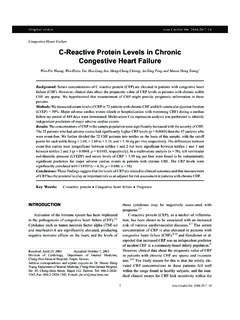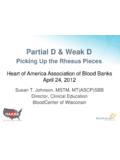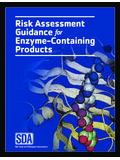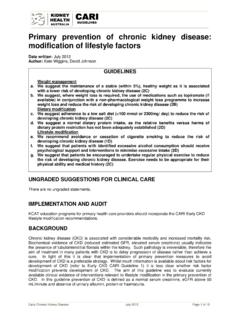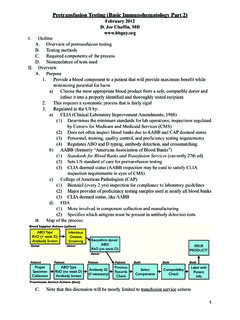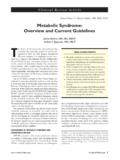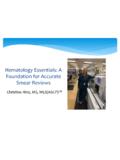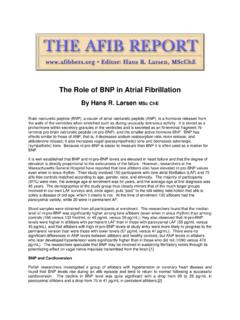Transcription of Guillain-Barré Syndrome and Influenza Vaccine
1 GuillainGuillain--BarrBarr Syndrome and Influenza Syndrome and Influenza VaccineVaccineJames J. Sejvar, MD; Lawrence B. Schonberger, MD, MPHJ ames J. Sejvar, MD; Lawrence B. Schonberger, MD, MPHD ivision of Viral and Rickettsial DiseasesDivision of Viral and Rickettsial DiseasesNational Center for Zoonotic, Vectorborne, and Enteric DiseasesNational Center for Zoonotic, Vectorborne, and Enteric DiseasesCenters for Disease Control and PreventionCenters for Disease Control and PreventionDina Pfeifer, MD, MScDina Pfeifer, MD, MScDepartment of Immunization, Vaccines, and BiologicalsDepartment of Immunization, Vaccines, and BiologicalsWorld Health OrganizationWorld Health OrganizationGuillainGuillain--BarrBarr Syndrome (GBS) Syndrome (GBS)
2 ImmuneImmune--mediated polyradiculoneuropathymediated polyradiculoneuropathy Acute Acute subacute subacute ascendingascending limb weakness with decreased limb weakness with decreased reflexesreflexes Cranial nerve palsies, respiratory failureCranial nerve palsies, respiratory failure Several potential mechanisms hypothesizedSeveral potential mechanisms hypothesized Humoral or cellular immune response to antigenic stimulus, Humoral or cellular immune response to antigenic stimulus, resulting in attack on nerve selfresulting in attack on nerve self--proteinsproteins Numerous infectious agents and immunizations temporally Numerous infectious agents and immunizations temporally associatedassociated Strongest association with Strongest association with Campylobacter jejuniCampylobacter jejuniinfection infection molecular mimicrymolecular mimicry Incidence increases with age, particularly over 50 Incidence increases with age, particularly over 50 Characteristic clinical, laboratory, electrodiagnostic featuresCharacteristic clinical, laboratory.
3 Electrodiagnostic features Outcome generally favorableOutcome generally favorable Case fatality 5 Case fatality 5 10%10% Neurologic sequelae in 20%Neurologic sequelae in 20% Older age with worse prognosisOlder age with worse prognosisGBS and Influenza Vaccine : MethodsGBS and Influenza Vaccine : Methods All available literature reviewed (limited to controlled studiesAll available literature reviewed (limited to controlled studies)) Use of swineUse of swine--antigen containing Influenza vaccines, including antigen containing Influenza vaccines, including A/NJ/76 (H1N1), used preA/NJ/76 (H1N1), used pre--and postand post--1976 assessed1976 assessed Archived WHO, CDC, CBER recordsArchived WHO, CDC, CBER records AFEB recordsAFEB records Personal communicationsPersonal communications Comparison data on virologic, molecular characteristics of Comparison data on virologic, molecular characteristics of A/NJ/79 Influenza virus, current A/CA/09 virus, other SWA/NJ/79 Influenza virus, current A/CA/09 virus, other SW--OI OI virusesviruses Best available data for Best available data for backgroundbackground rates of GBSrates of GBS.
4 / 100,000 population / year / 100,000 population / year in developed countriesin developed countries When possible, published rates converted to incidence / When possible, published rates converted to incidence / 100,000 for comparison100,000 for comparisonGBS and A/NJ/76 (H1N1) VaccineGBS and A/NJ/76 (H1N1) Vaccine 1976: human1976: human--toto--human transmission of swinehuman transmission of swine--origin H1N1 origin H1N1 Influenza virus on US military baseinfluenza virus on US military base 40 million doses of Vaccine among US civilians, military40 million doses of Vaccine among US civilians, military Influenza epidemic never materializedInfluenza epidemic never materialized ClusterCluster of GBS cases noted though AE surveillance early of GBS cases noted though AE surveillance early in campaignin campaign Campaign discontinued Dec.
5 16, 1976 Campaign discontinued Dec. 16, 1976 Subsequent assessment of US civilians by CDC, state Subsequent assessment of US civilians by CDC, state health depts. Active, national caseActive, national case--finding between December 16, finding between December 16, 1976 and Jan 31, 19771976 and Jan 31, 1977 GBS among adult vaccinees compared to nonGBS among adult vaccinees compared to non--vaccinees vaccinees (( expectedexpected rate)rate)1. Based on 8 controlled assessments, 1. Based on 8 controlled assessments, A/NJ/76 (H1N1) Influenza Vaccine associated A/NJ/76 (H1N1) Influenza Vaccine associated with increased risk of GBS in adultswith increased risk of GBS in adults RR of RR of (95% CI (95% CI ) ) Reporting rate of Reporting rate of cases / 100, cases / 100,000/ yr/ yr NonNon--vaccinees: / 100,000 / yrvaccinees.
6 / 100,000 / yr Attributable risk of Attributable risk of / 100, / 100,000vaccineesvaccinees Features consistent with biological plausibilityFeatures consistent with biological plausibility Risk concentrated within first 6 weeks of Risk concentrated within first 6 weeks of vaccination (peak at week 2 vaccination (peak at week 2 3)3) Not a lotNot a lot--or manufactureror manufacturer--specific phenomenonspecific phenomenon Several reSeveral re--analyses with same conclusionsanalyses with same conclusions2. There are limited data on GBS risk among 2. There are limited data on GBS risk among other populations receiving populations receiving Vaccine .
7 Military A/NJ/76 formulation (bivalent) same as civilian, but higher doseA/NJ/76 formulation (bivalent) same as civilian, but higher dose( ml ( ml vs. ml); also received B vaccinevs. ml); also received B Vaccine Single study: Single study: no increased risk of the magnitude reported by CDCno increased risk of the magnitude reported by CDC ; ; limitations in data*limitations in data* No additional controlled data No additional controlled data Use of A/NJ/76 Vaccine outside USUse of A/NJ/76 Vaccine outside US UK: ? Anecdotal reports, but no confirmationUK: ? Anecdotal reports, but no confirmation Canada: 800,000 doses of monovalent and bivalent Vaccine distribCanada: 800,000 doses of monovalent and bivalent Vaccine distributeduted Limited mechanisms to detect risk of GBS; small population of Limited mechanisms to detect risk of GBS; small population of vaccineesvaccinees NetherlandsNetherlands million doses apparently million doses apparently delivered None apparently usedNone apparently used*Johnson, D.
8 Arch Neurol 1982;39:213. There are limited data on risk of GBS 3. There are limited data on risk of GBS from swinefrom swine--antigenantigen--containing Influenza containing Influenza vaccines prevaccines pre----19761976 1955 1955 1969: Swine antigen (A/swine/Iowa/1976/31 H1N1) 1969: Swine antigen (A/swine/Iowa/1976/31 H1N1) routinely incorporated into military vaccinesroutinely incorporated into military vaccines 1956 1956 1959: same antigen incorporated in some civilian 1959: same antigen incorporated in some civilian vaccinesvaccines No suggestion of increased riskNo suggestion of increased risk Limited passive surveillance infrastructureLimited passive surveillance infrastructure No systematic assessmentsNo systematic assessments In limited exposed population, no risk of sufficient In limited exposed population, no risk of sufficient concern enough to be reported to public health concern enough to be reported to public health authorities or publishedauthorities or published Swine antigens not used since 1976 (Netherlands 1977?)
9 Swine antigens not used since 1976 (Netherlands 1977?)4. Most data suggest little, if any, significant 4. Most data suggest little, if any, significant risk of GBS following subsequent Influenza risk of GBS following subsequent Influenza vaccines vaccines association between other Influenza Vaccine formulations and GBSA ssociation between other Influenza Vaccine formulations and GBSless clearless clear 9 9 wellwell--designed,designed,controlled assessments between 1977 and 2009controlled assessments between 1977 and 2009 Two suggesting a small but statistically significant increase inTwo suggesting a small but statistically significant increase inrisk of GBSrisk of GBS Lasky et al*: Lasky et al*.
10 Increased risk following Influenza Vaccine for combined 1992increased risk following Influenza Vaccine for combined 1992--93 and 93 and 19931993--94 seasons (RR ; 95% CI 94 seasons (RR ; 95% CI ; AR / 100,000 ; AR / 100,000 vaccinations); vaccinations); no such risk with each season separately. no such risk with each season separately. Juurlink et al#: Juurlink et al#: increased risk of GBS following presumed Influenza vaccination increased risk of GBS following presumed Influenza vaccination over over period of 1993 period of 1993 2004 (RR , 95% CI 2004 (RR , 95% CI ) ) No increase in incidence of hospital admissions for GBS followinNo increase in incidence of hospital admissions for GBS following g universal Influenza vaccination in Ontario in Influenza vaccination in Ontario in 2000.











